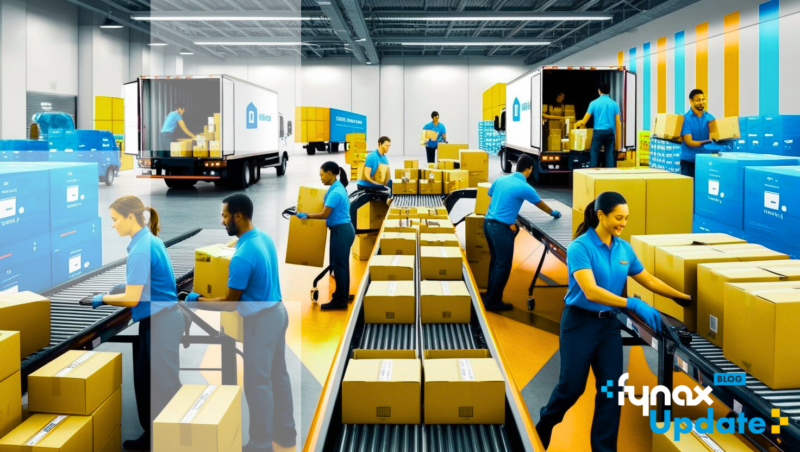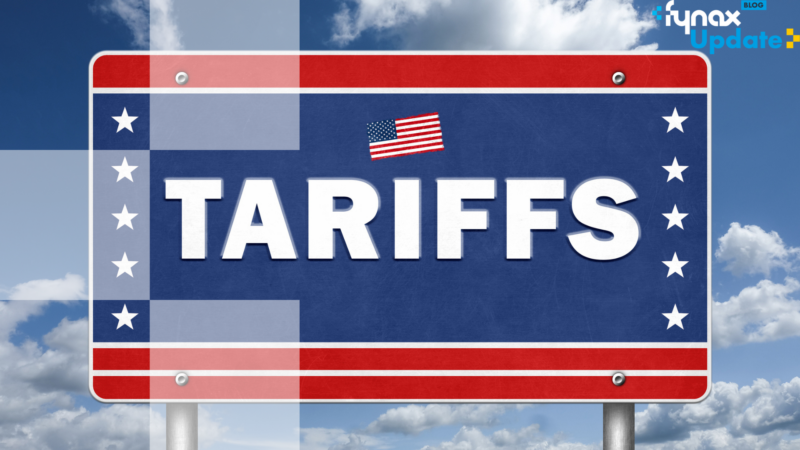E-commerce trends 2023 - fynax looks ahead to the year
Share this article
Tags
Categories

Buy now pay later, gamification in online retail, the use of artificial intelligence and the future potential of live shopping - At the beginning of the year, we presented some important e-commerce trends for 2023. Now that a good eight months have passed, it is time for an initial evaluation and analysis of the current situation: Which trends are asserting themselves on the major online platforms? And with the constant development of AI and automation efforts, can we expect a lasting change in e-commerce? In this article, we look at these topics, among others, and explain which e-commerce trends have been able to assert themselves in the industry and which have not.
Buy Now Pay Later
The "buy now, pay later" payment model is becoming increasingly popular in Germany and Europe. Providers such as Klarna, PayPal, Affirm and Afterpay are just a few examples that are particularly popular with German users. The flexible payment model allows consumers to pay for their online purchases in installments instead of paying the full amount immediately. What is particularly attractive is that customers can often use this flexible payment method without incurring additional interest or fees.
The model is not only becoming increasingly popular with end consumers, but also with online retailers themselves. Integrating a BNPL function into your own online store can help to increase conversion rates and significantly boost your store's sales.
Cybercrime
Cybercrime has become a pervasive security problem in online commerce as a result of mechanization and digitalization. At the same time, however, this also offers companies and service providers the opportunity to further develop cybersecurity products and bring them to market. It is very likely that cybercrime & cybersecurity will not only be a key issue in 2023 or the following year, but also in the coming decade. This is because the increasing growth of e-commerce, increased use of digital payment methods and new technologies such as artificial intelligence will automatically open up new security gaps that could be affected by cybercrime.
To counteract this, not only companies or online platforms, but also governments will increasingly invest in improving cyber security. Nevertheless, it is also important for online retailers to take precautions themselves at an early stage in order to protect their personal and company data in the best possible way.
AI and the automation of supply chains
The latest developments in the industry paint a relatively clear picture: artificial intelligence is likely to play a major role in e-commerce. Especially in the automation of supply chains and logistics, as AI technologies can use machine learning, data analysis and robotics to help make processes more efficient, reduce costs and improve supply chain security.
The benefits of AI automation in supply chains and logistics are manifold: by using AI, for example, companies can improve their demand forecasts in order to optimize their stock levels and thus avoid bottlenecks. AI can also help with route planning and optimizing transport routes to make deliveries faster and more cost-effective. Although perhaps still unthinkable across the board, AI-controlled robots and drones will play a major role in warehousing and shipping in the future, as they can help to automate manual tasks and sustainably increase efficiency.
Gamification
There is still a big question mark behind the gamification approach. The advantages of a well-thought-out gamification strategy are obvious, because in addition to increased customer loyalty, the integration of gamification elements and functions also ensures more interaction in your online store and a more positive shopping experience for users. But does gamification even play a role in Germany? To get to the point quickly: Yes.
Many companies use gamified elements to retain customers on their platform, encourage interaction and thus increase sales. But how exactly does the principle work? Online platforms such as Nike, VW and Lufthansa use gamified elements in their websites with the help of points systems, rewards, leaderboards, challenges, badges and virtual currencies. These elements are intended to help motivate customers to spend more time on the website, shop more frequently and achieve certain defined goals. Companies also use gamification to build brand loyalty by offering users an entertaining and interactive shopping experience.
Gamification in German companies
Let's briefly look at a few illustrative examples of companies in Germany that have already successfully integrated gamification:
- Deutsche Bahn: Deutsche Bahn has an app called "DB Navigator" that uses gamification elements such as points, leaderboards and rewards to encourage customers to use public transport.
- Volkswagen: Volkswagen has developed an app called "Think Blue. Challenge", in which drivers can collect points by driving in an environmentally friendly way. These points can then be redeemed for various rewards.
- SAP: SAP has an internal platform called "SAP Community Network" that uses gamification elements such as badges, points and leaderboards to motivate employees to actively participate in discussions and knowledge sharing.
- Deutsche Telekom: Deutsche Telekom has an app called "Sea Hero Quest", which was developed in collaboration with scientists to collect data on human orientation skills. The app uses gamification elements to motivate players to complete various tasks in the game.
- Lufthansa: Lufthansa has a well-known frequent flyer program called "Miles & More", where customers can reach different status levels by earning air miles. These levels offer various benefits and rewards to motivate users to remain loyal.
How can you integrate gamification into your online store?
All well and good. But how can online retailers who are not part of the global brands use this approach for themselves? Once you have built up your customer base as a retailer, you can incorporate gamification elements into your online store at any time. Let website and IT specialists help you integrate playful elements such as points systems, rewards or leaderboards and challenges into your store. This will increase the likelihood that customers will shop with you again in order to secure benefits, collect points or receive rewards.
At the same time, you increase traffic and interaction in your online store. Playful elements such as quizzes, puzzles or interactive games encourage your customers to spend more time on your website and engage more intensively with your products and services. Product presentations can also be made much more interactive with gamification. Virtual fitting rooms and 3D product visualizations improve the shopping experience and help your customers make a purchase decision.
Gamification & data analysis?
One point that is often overlooked is the added value of data analysis through gamification. This is because the approach can motivate users to perform certain actions, such as completing surveys, writing reviews or sharing products on social media. Rewards or competitions encourage them to perform these actions, which in turn benefits the company and data analysis. The increased interaction on your website can be used to collect data about your customers' behavior and preferences. By analyzing this data, companies can then create personalized offers and recommendations to further improve the shopping experience.
Live shopping
Live shopping! The megatrend from Asia has not yet been able to establish itself to the same extent in Europe. Nevertheless, live shopping has great potential to establish itself as a trend in e-commerce, as consumers in the Generation Z are looking for new and more interactive shopping experiences. Live shopping offers the opportunity to pick up precisely this focus group and present and sell products in real time, while customers can interact directly with the sales staff.
In recent years, more and more companies have specialized in live shopping and offer their customers the opportunity to buy products in real time via live streams. This trend has become particularly important during the COVID-19 pandemic, as many people are increasingly shopping online and looking for new shopping experiences. At HSE24 and QVC, for example, live online shopping via livestream is already a firmly established part of the business. However, the Shopstream platform now also enables companies to organize live shopping events and thus push their brands.



